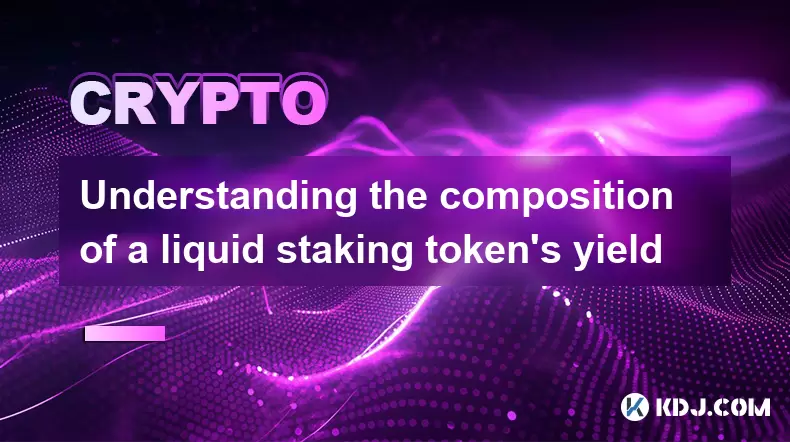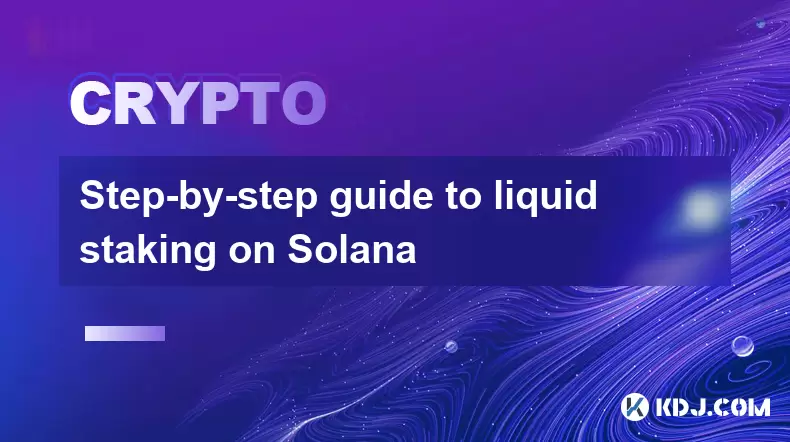-
 Bitcoin
Bitcoin $118000
-1.29% -
 Ethereum
Ethereum $3758
-3.52% -
 XRP
XRP $3.113
-5.04% -
 Tether USDt
Tether USDt $0.9998
-0.05% -
 BNB
BNB $818.5
-3.23% -
 Solana
Solana $181.9
-5.10% -
 USDC
USDC $0.9997
-0.04% -
 Dogecoin
Dogecoin $0.2239
-8.33% -
 TRON
TRON $0.3233
0.95% -
 Cardano
Cardano $0.7842
-6.81% -
 Hyperliquid
Hyperliquid $43.35
-2.12% -
 Sui
Sui $3.894
-9.97% -
 Stellar
Stellar $0.4176
-6.99% -
 Chainlink
Chainlink $17.97
-6.68% -
 Bitcoin Cash
Bitcoin Cash $576.7
-2.30% -
 Hedera
Hedera $0.2671
-7.23% -
 Avalanche
Avalanche $24.64
-6.12% -
 UNUS SED LEO
UNUS SED LEO $8.972
0.08% -
 Litecoin
Litecoin $108.1
-6.55% -
 Toncoin
Toncoin $3.198
-5.94% -
 Shiba Inu
Shiba Inu $0.00001325
-6.80% -
 Ethena USDe
Ethena USDe $1.001
-0.04% -
 Uniswap
Uniswap $10.27
-7.02% -
 Polkadot
Polkadot $3.935
-7.49% -
 Monero
Monero $317.7
-2.24% -
 Dai
Dai $0.9999
0.00% -
 Bitget Token
Bitget Token $4.550
-3.85% -
 Pepe
Pepe $0.00001179
-8.68% -
 Cronos
Cronos $0.1418
-2.34% -
 Aave
Aave $286.2
-6.49%
How to store Stargate Finance (STG) coins
Storing your Stargate Finance (STG) coins on a hardware wallet, such as Ledger Nano X or Trezor Model T, provides enhanced security by keeping your private keys offline.
Nov 28, 2024 at 04:58 pm

How to Store Stargate Finance (STG) Coins
Stargate Finance is a decentralized financial (DeFi) protocol that allows users to transfer assets across different blockchains. STG is the native token of the Stargate Finance platform and is used for a variety of purposes, including paying for transaction fees, staking, and governance.
There are a number of different ways to store STG coins, including:
Hardware Wallets
Hardware wallets are physical devices that store your private keys offline, making them one of the most secure ways to store cryptocurrency. There are a number of different hardware wallets available, including the Ledger Nano X and the Trezor Model T.
To store STG coins on a hardware wallet, you will first need to create a wallet address. You can do this by following the instructions that came with your hardware wallet. Once you have created a wallet address, you can then transfer your STG coins to that address.
Software Wallets
Software wallets are digital wallets that store your private keys on your computer or mobile device. Software wallets are less secure than hardware wallets, but they are more convenient because you can access them from anywhere. There are a number of different software wallets available, including the Exodus wallet and the MetaMask wallet.
To store STG coins on a software wallet, you will first need to create a wallet address. You can do this by following the instructions that came with your software wallet. Once you have created a wallet address, you can then transfer your STG coins to that address.
Exchanges
Cryptocurrency exchanges are online platforms that allow you to buy, sell, and trade cryptocurrencies. Some exchanges also offer custody services, which means that they will store your private keys for you. Storing your STG coins on an exchange is less secure than storing them on a hardware or software wallet, but it is more convenient because you can access your coins from anywhere.
To store STG coins on an exchange, you will first need to create an account. Once you have created an account, you can then deposit your STG coins into your account.
Staking
Staking is the process of holding your cryptocurrency in a wallet to support the network and earn rewards. When you stake your STG coins, you are essentially lending them to the Stargate Finance network. In return, you will earn rewards in the form of additional STG coins.
To stake your STG coins, you will need to use a staking pool. There are a number of different staking pools available, including the Stargate Finance staking pool and the Binance staking pool.
Additional Tips for Storing STG Coins
In addition to the methods listed above, there are a few additional tips that you can follow to help keep your STG coins safe:
- Use a strong password for your wallet.
- Enable two-factor authentication on your wallet.
- Store your private keys in a safe place.
- Back up your wallet regularly.
- Be aware of phishing scams.
Disclaimer:info@kdj.com
The information provided is not trading advice. kdj.com does not assume any responsibility for any investments made based on the information provided in this article. Cryptocurrencies are highly volatile and it is highly recommended that you invest with caution after thorough research!
If you believe that the content used on this website infringes your copyright, please contact us immediately (info@kdj.com) and we will delete it promptly.
- AI Tokens, Ethereum, and Market Leaders: A New Era?
- 2025-07-29 21:10:13
- Linea Airdrop: Ethereum Alignment & the L2 Network's Bold Move
- 2025-07-29 21:10:13
- Bitcoin, Crypto Mining, and Finland: A Nordic Boom in 2025
- 2025-07-29 20:30:12
- Crypto Carnage: KNC and 1000CAT Among Today's Top Crypto Losers
- 2025-07-29 20:30:12
- GENIUS Act: Stablecoin Regulation Heats Up in the US
- 2025-07-29 18:50:13
- Crypto Presale Mania: Is Punisher Coin the Next Bitcoin?
- 2025-07-29 18:50:13
Related knowledge

Understanding the composition of a liquid staking token's yield
Jul 20,2025 at 09:07am
What Is a Liquid Staking Token?A liquid staking token is a representative asset issued to users who stake their native cryptocurrency on a proof-of-st...

Is it better to stake directly or use a liquid staking service?
Jul 22,2025 at 08:21pm
Understanding the Basics of StakingStaking in the context of blockchain and cryptocurrency refers to the process of locking up digital assets to suppo...

What to do during an LST depeg event
Jul 20,2025 at 04:57pm
Understanding LST Depeg EventsAn LST (Liquid Staking Token) depeg event occurs when the token, which is typically pegged to the value of the underlyin...

Can you provide liquidity with liquid staking tokens?
Jul 22,2025 at 10:22am
Understanding Liquid Staking TokensLiquid staking tokens (LSTs) are derivative tokens that represent staked assets on a proof-of-stake (PoS) blockchai...

What are the best wallets for storing LSTs?
Jul 21,2025 at 03:14pm
Understanding LSTs and the Need for Secure StorageLSTs, or Liquid Staking Tokens, are derivative tokens representing staked assets on a blockchain. Wh...

Step-by-step guide to liquid staking on Solana
Jul 20,2025 at 06:42am
What is Liquid Staking on Solana?Liquid staking is a mechanism that allows users to stake their cryptocurrency while retaining liquidity through the i...

Understanding the composition of a liquid staking token's yield
Jul 20,2025 at 09:07am
What Is a Liquid Staking Token?A liquid staking token is a representative asset issued to users who stake their native cryptocurrency on a proof-of-st...

Is it better to stake directly or use a liquid staking service?
Jul 22,2025 at 08:21pm
Understanding the Basics of StakingStaking in the context of blockchain and cryptocurrency refers to the process of locking up digital assets to suppo...

What to do during an LST depeg event
Jul 20,2025 at 04:57pm
Understanding LST Depeg EventsAn LST (Liquid Staking Token) depeg event occurs when the token, which is typically pegged to the value of the underlyin...

Can you provide liquidity with liquid staking tokens?
Jul 22,2025 at 10:22am
Understanding Liquid Staking TokensLiquid staking tokens (LSTs) are derivative tokens that represent staked assets on a proof-of-stake (PoS) blockchai...

What are the best wallets for storing LSTs?
Jul 21,2025 at 03:14pm
Understanding LSTs and the Need for Secure StorageLSTs, or Liquid Staking Tokens, are derivative tokens representing staked assets on a blockchain. Wh...

Step-by-step guide to liquid staking on Solana
Jul 20,2025 at 06:42am
What is Liquid Staking on Solana?Liquid staking is a mechanism that allows users to stake their cryptocurrency while retaining liquidity through the i...
See all articles

























































































